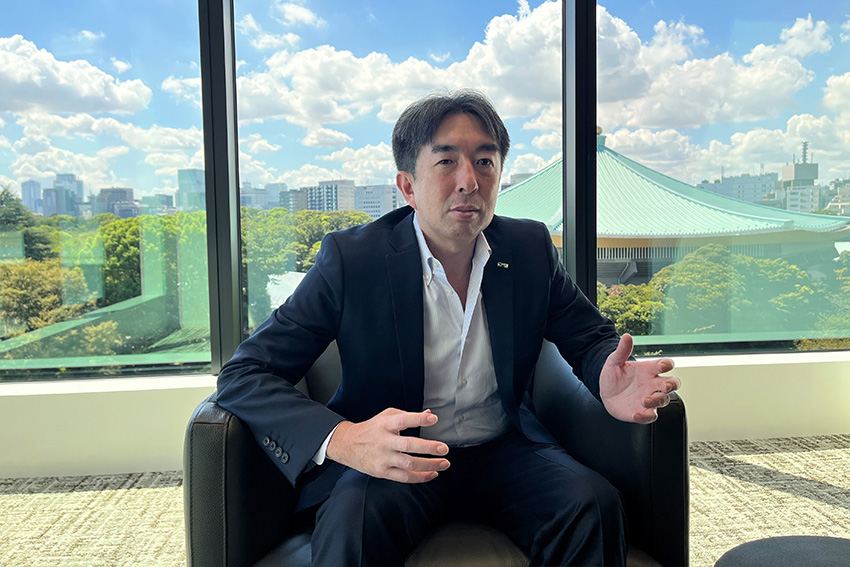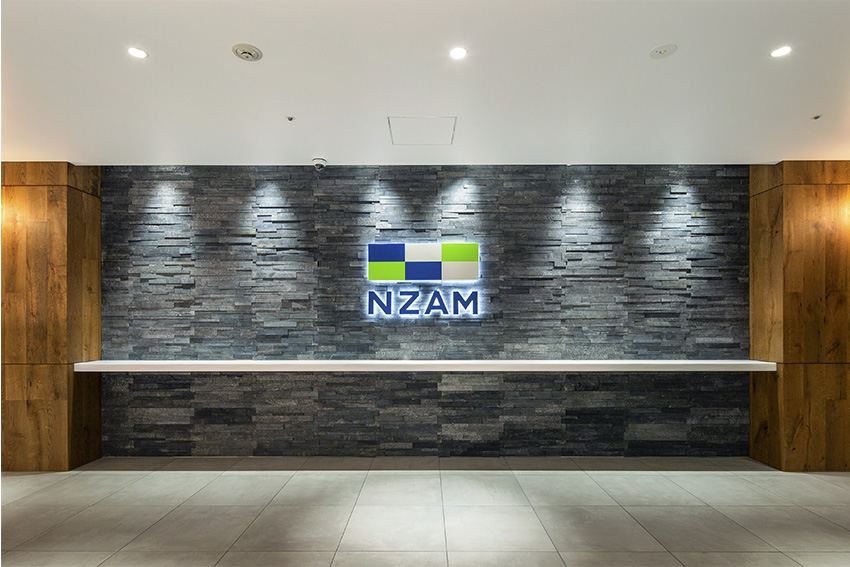Ever since its founding in 1985, Norinchukin Zenkyoren Asset Management has become a trusted partner for effective asset management services.

If we look at March 2024, we saw a record-breaking financial performance from the Japanese market, roaring past the JPY 40,000 mark. With this, we also saw increased initial public offering (IPO) activity as 97 companies went public, and this is alongside a purge in private equity deals. If you look at the average from 2018 to 2022, it actually tripled. Against this backdrop, we saw a surge in foreign capital, reaching a ten-year high. What were the core components of this strong, record-breaking performance? Looking towards the future, what must Japan do to continue this trend?
There are two major reasons behind this success: external and internal. More weight is placed on the internal environment, and as you mentioned, the Tokyo Stock Exchange is leading the way for companies to improve capital efficiency. From a macro perspective, things are shifting from deflation to inflation, and we see the strength of Japan being refocused thanks to supply chain reestablishment. This has resulted in the booming of semiconductor-related companies.
Internal structure reforms have been the driving force, but there are external factors to consider as well. Overseas investors now have an understanding of the Japanese market and, therefore, are looking to invest more in it. Until recently, the Japanese market has been seen as a market with minimal growth. Money that was previously invested in the Chinese and US markets is now being invested in Japanese markets. With these reforms, more attention was placed on Japan.
What I just mentioned is just the surface feeling, but on a deeper level, with the depreciation of the JPY more visitors have visited Japan. Here they experience all of the hospitality that Japan offers and they have a chance to observe the quality of Japanese products and services. It is in these observations that investors are
seeing the potential of Japan. This has led to further overseas investment into Japan. Internal reforms and the perception of Japan from overseas investors have combined to create a much greater flow of capital.

NZAM Headquarters
When listening to the media, there is some skepticism as to the performance of the Japanese market. Pessimists will say that the recent performance is based on external factors such as the downfall of China, geopolitical tensions, and JPY depreciation. Optimists will say that internal reforms, NISA, and the change in mindset have pushed momentum forward. Should these macroeconomic conditions normalize, do you believe that internal reforms are enough to carry Japan’s bullish momentum forward?
Yes, and I will explain why I think this way. With the more pessimistic side, I understand the apprehension due to the risks. Overseas investment is dependent on currency rate fluctuations. Interest rates therefore determine how those fluctuations move.
On a more long-term perspective, those internal reforms are going to take a strong lead in strengthening the corporate values of companies. These are recent, however, and companies have been working on these reforms since the early 2010s, and they are focused on the price-to-book ratio (PBR). Some of these reforms have been actively increasing the value of companies, and this is especially true with the generational change within top executive positions. In fact, some reforms have led to some child companies breaking free from parent companies in order to restructure and increase capital efficiency. We are now in a period where companies are looking to find ways to allocate this new capital that has emerged during the deflation period. Many are in discussions over whether to invest or allocate those funds as dividends to shareholders.
In August 2024 we saw a market crash which resulted in increased share buybacks. As a result, there has been more interest in Japanese companies and overseas investors now have a better understanding of Japan’s core values. This will only continue with further enhancements of corporate governance, transparency, and increased capital efficiency.
With the market crash, there are those that believe this was more about market repositioning and that the media overblew the situation. In fact, the Nikkei 225 bounced back very quickly the following week.
I agree, and I think overall there won’t be any long lasting effects. It isn’t the stock price, rather it is the corporate value that is important. We want to continue to focus on the elevation of Japanese corporate values, supporting companies so they can flourish.
While Japan was seen as a minimal growth market, with the market factors now in play, such as geopolitical risks, it has now become evident that there is tremendous room to grow. The make-up of foreign investment, however, is mostly Asian- and European-based investors. If we talk about the US, relatively speaking, it has been quite small in comparison. There is a potential interest rate cut on the horizon, and this could unleash a flood of capital to Japan. What is your prediction for the upcoming year in terms of the makeup of foreign investment in Japan? In terms of NZAM, what specific services are you developing to cater to those new investments?
In the short-term future, there will be a huge flow of money into the Japanese market from overseas. At the same time however, there will be pull-outs from the Japanese market as well. Mid-to-long-term however, investments will be stable due to the understanding of enhanced Japanese corporate governance.
There are many foreign private equities that are trying to acquire companies in Japan. Whenever I talk with investors engaged in global alternative investments, they often say they have an interest in the Japanese market.
The US market tends to have more patriotism with companies and currencies. It creates a home country bias, meaning that there isn’t as much investment and placing hindrances. US investors are very keen to understand risk and return. Once they become more acquainted with the Japanese market, I believe there will be more investment from US investors.
You mentioned a difference in education between Japanese investors and American investors. Usually, Japanese citizens keep all of their savings in a personal savings account with a 0.1% interest rate. With this in mind, the Japanese government is trying to change people's mindset from savings to investment. The new NISA is pointing average Japanese citizens in this direction. However, the big problem is that when Japanese people invest, they traditionally invest in mutual funds tracking American products. Taking into account the government’s push to grow the asset management industry, what is the responsibility of asset management firms like NZAM to change Japan's mindset? What are you doing to educate the Japanese public and bring more investment to Japan from Japan?
Japanese people are reluctant to invest, particularly during the 1990s and 2000s, because many of them failed in the past when investing. The price of products and services has been quite stable and kept low. Thinking about the risk, many of these people felt it was better to just keep their money in a bank account. With the introduction of NISA and recent reforms, the younger generation has suddenly become very interested in investments. Since investment education isn’t part of traditional schooling, they want to choose a diversified mutual fund to avoid risks. As Japanese stocks are not on the rise, the thought is to focus on overseas funds instead.
With the reform of NISA in January 2024, many people are now investing in mutual funds that are not currency hedged since they are not considered risky. With the August market crash there is a greater understanding that mutual funds have their own risks.
We feel it is important to provide learning opportunities to Japanese nationals. The Japanese government and The Investment Trusts Association, Japan, have both been taking active steps to provide these educational opportunities. Our firm has made it a point to strengthen our product explanations and hold seminars that thoroughly explain the risks and rewards. Another activity we are doing is the creation of videos to educate middle school and high school students on the financial market. By working together with our group companies, we can offer a comprehensive approach to spreading awareness.
As an asset management firm, it is important for us to diversify our product lineup. This will allow us to cater to specific needs of retail and institutional investors. The needs are ever changing so we need to be ready to provide the most adequate products. Investors looking to go directly to a company’s equity may still encounter hurdles so we can take investments into mutual funds and manage the risk.
I believe that the introduction of the NISA and the increase in the number of people investing in mutual funds are the only entry points. Once people become familiarized and acquainted with our products and the market movements, they will progress more toward riskier products that provide higher rewards. That could include products such as active index funds, private equity funds, and individual investments. This would empower people to be more active in selecting their investments, making them take more time but moving them in a positive direction. Even those with retirement pensions will invest in the market. As a manager of these investments, it is important for us to channel them into good opportunities.

In August 2022 you launched a new Credit Flagship Fund, an alternative investment compared to what you traditionally do. In September 2023 you also launched a DAX ETF, which tracks premiere German DAX Index companies and provides investment opportunities to that market. Can you tell us about some of the core values of NZAM that guide these new product launches? As we look towards the future, do you plan on launching any new types of investment opportunities?
Let me first explain who we are as a company, which will help explain some of our future plans. As a background, we are part of the JA Group, and this group is also known as the Japan Agricultural Cooperatives, which is located more in regional areas, and thus, we have a vast network nationwide. We are also a joint venture between The Norinchukin Bank, which performs the banking function for the JA Group, and the National Mutual Insurance Federation of Agricultural Cooperatives, which performs the insurance function, and we partly manage the assets of both companies. Therefore, it is important that we have a long-term vision together with good core value analysis.
Our company offers a variety of funds covering a comprehensive portfolio of products. With our experience and capacity, we can assist those that cannot understand the complex landscape. What we do is important, and risk analysis plays a big role here. It is also why we always place the investors first. It is therefore key to talk with investors and get their feedback, which in turn gives us a better understanding of their needs.
It is clear that you have a bottom-first approach, which extends to the ESG element as well. We saw in our research that you joined the Net Zero Asset Managers Association, where you have committed to have 75% of your assets in line with SDGs, which is the equivalent of USD 52 billion. This also includes real estate investment products. Can you tell us about the integration of ESGs in your investment products? What steps are you taking to become a pioneer when it comes to handling both your clients and these ESG initiatives?
In 2022 we renewed our corporate principles, in particular to emphasize the creation of a flourishing environment for stakeholders and entities living in Japan. We have also formulated our ESG statement to focus on the mitigation of climate change. As a part of the JA Group, regions and localities are also very important. One more aspect we feel very strongly about is human rights. Collaboration is key, and by taking part in global initiatives, we are able to learn global standards. For example, by incorporating PRI as one of the indexes, ESG has become a factor for every investment. There are, of course, arguments as to whether to prioritize returns on investments or ESGs, but our company believes that both can be achieved and co-exist. We see the ESG component as the return driver that would provide benefits to stakeholders.
Recently, with the geopolitical tensions in place and energy prices, investments in ESGs have been in a downfall pattern, meaning from our perspective, it is the best time to push forward with ESG investments. As an asset manager it is important that we take a lead in educating and convincing institutional investors to shift their mindset into one that is more ESG-oriented. To this end, we are conducting seminars and discussions. Our mission isn’t just to provide solid SDG products.
Our focus is mid-to-long-term and as an asset manager we must conduct thorough risk and return analysis. ESG is a core of our business and one of the dominant pillars. An appeal we make is to institutional investors to use our company to guide them through the world of ESGs and the market.
Imagine that we come back in five years and have this interview all over again. What goals or dreams do you hope to achieve by the time we come back for that new interview?
We want our company to be known as a reliable asset manager for retail and institutional buyers. Our target is to provide a set of services to settle the anxiety that investors might have by providing education and other guidance. We want to be there whenever investors need support.
For more information, visit their website at: https://www.ja-asset.co.jp/
0 COMMENTS